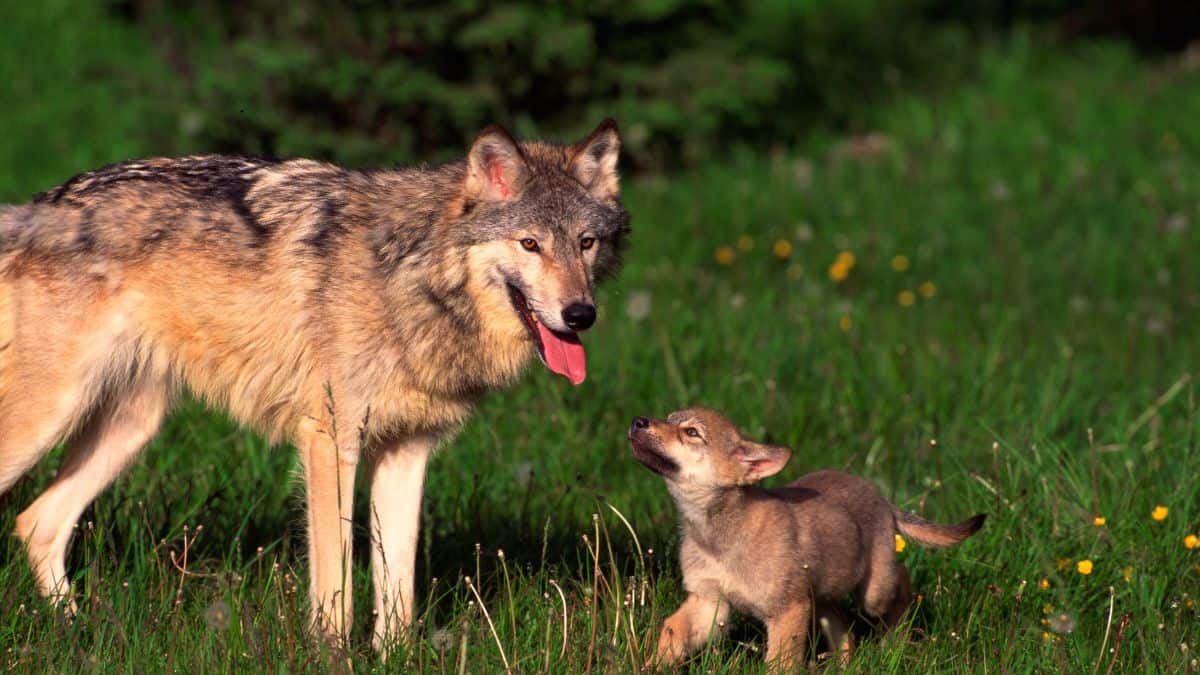If you’ve ever had a pebble in your shoe, you likely know how much difference a small problem can make. That tiny stone, just a few millimeters wide, can cause pain, throw off your balance, overtake your thoughts, and hinder your ability to keep moving. Life often presents challenges like these — seemingly minor problems that spiral into an outsized web of complications.
Too much stress at work can lead to irritability, fatigue, and strained relationships. Alternatively, a physical ailment can derail your routine, interfere with health goals, and alter your emotional balance. There are countless possible sources of these chain-reaction effects, and they’re not always as obvious as a pebble in your shoe.
To see how massive an impact situations like these can have, consider the real story of how a single predator saved an entire ecosystem.
The Wolves of Yellowstone
By the early 1990s, the ecology of Yellowstone National Park faced numerous problems. Many species of the park’s flora and fauna faced thinning populations and poor survival conditions. In addition, large areas struggled with erosion, barren landscapes, and more.
However, all this began to change in 1995 when rangers reintroduced a small population of gray wolves to the park. The return of wolves, which had been hunted to eradication from the area 70 years prior, began a chain reaction researchers call a trophic cascade.
As the canines acclimated to the area, they set off a waterfall of positive effects that continues unfolding today:
- Elk, which had grown massively overpopulated in the absence of wolves, stabilized and changed their migratory habits.
- Carrion species, including birds and bears, thrived due to the availability of wolf kills.
- Changes in the elk population and behavior allowed brush and trees in flatland areas to recover and flourish, particularly near rivers and streams.
- Beavers bounced back from the brink of eradication and built new dams thanks to the recovering plant life.
- Insects, amphibians, fish, and some birds prospered following the growth of beaver colonies.
- Coyotes, which had become apex predators in the absence of wolves, returned to a stable population.
- Antelope, rodent, and fox populations grew due to the changing coyote population.
Sometimes, a series of problems and struggles are not as unrelated as they seem. What may feel like a single solution to a small problem could end up creating a far-reaching web of positive impacts. Here’s how the same effect can work in your life.
Your Missing Wolves
It is safe to assume that a dwindling beaver population is not a challenge you face in your day-to-day life. However, the wolves of Yellowstone are one example of what the natural world can teach us about personal growth.
Like a National Park, your life is a complex and delicate ecosystem. Everything in it is connected through a vast web, even when the connections aren’t immediately apparent.
For example, the amount and quality of your sleep can impact everything from your emotional regulation to your energy levels, digestion, and ability to focus. These things, in turn, affect your work performance, relationships, diet and exercise, and so much more. The pattern continues. It can even become cyclical if, for instance, pervasive worries about work cause you to lose sleep.
If you found yourself in that situation, getting more sleep wouldn’t just be a way to feel less tired every day. Improving your rest would be the first link in a chain of conditions improving your health and happiness.
Insufficient sleep is a common source of problems like these, but it’s certainly not the only one. The same effect may also stem from a deficiency or imbalance of any of the following:
- Positive thinking
- Daily routines
- Regular exercise
- Social engagement
- Mental health management
Little in life happens in isolation. When you find yourself struggling on multiple fronts, a slight change in the right place could make a world of difference.
Restoring Your Ecosystem
When your life has a metaphorical pebble in its shoe, there won’t always be a straightforward way to find and remove it. At the time Yellowstone reintroduced wolves, there was no sure way of knowing the impact it would have. That one simple change and its effects remain a matter of much discussion and research today.
If you want to find the missing wolves in your life and make a change that will restore vitality to your ecosystem, here are a few things that will help.
Self-Analysis
When chasing a particular goal or hoping to resolve a problem, it will always be helpful to take a step back and examine the issue before proceeding. In the case of Yellowstone, there were many issues: overpopulation, underpopulation, erosion, thinning plant life, etc.
That can happen to us sometimes, too. A quick look around at your circumstances can reveal any number of fires needing to be put out, ranging from work to your personal life to your emotional state.
If you want to heal an ecosystem like this, start by getting the lay of the land. Here is a moment when the power of thoughtful questions can go a long way:
- What is working well for you right now?
- What would you like to improve?
- How do the problem areas relate to each other, if at all?
Effective solutions start with a clear understanding of the problem. It’s always worth taking time to understand what you’re dealing with before trying to tackle it.
Experiments
Studying your situation will likely reveal valuable insight into your obstacles and potentially what’s causing them. Still, awareness won’t necessarily fix everything or even reveal a clear solution. However, it gives you somewhere to start.
To mimic the trophic cascade effect of importing those wolves, you will likely need to experiment. Test some things out.
If you have uncovered any shared themes to your present challenges, try focusing on those themes. For instance, you may want to try getting better sleep or addressing your eating habits if it appears that one of those is negatively impacting you on multiple fronts.
Alternatively, you can shift your focus to one big problem you’re dealing with and work on that. Often, a big rain cloud over one area of life can splash all over and dampen seemingly unrelated things. For example, when work is sucking the soul out of you, it can easily spill over to your family, social life, and health. When taking on a massive problem like that, consider the strategy of breaking down that problem into small, manageable parts.
Patience
For 70 years, the ecosystem of the world’s oldest national park struggled. From the eradication of the last wolves in the early twentieth century until their reintroduction near its end, the habitat faced gradual decline.
Since you don’t have to support 200 species of animals living across 2 million acres of land, most of your problems probably won’t take 70 years to solve. Even so, systemic issues take time to understand and more time to appropriately address.
Tackling challenges in your life from an ecosystem point of view is not an exact science. You can approach it in a quasi-scientific manner, with observation and testing different ideas, but in most cases, it will require patience. Some things you try won’t necessarily unravel every problem right away.
Make sure to give yourself some room in this process. Keep looking around, testing out changes and pursuits, and see what shakes loose. Sometimes you won’t see overwhelming results; sometimes, you’ll find a solution to a particular obstacle; and sometimes, you’ll set off a powerful chain reaction of healing and improvement that begets untold rewards.
Struggling? Try Wolves.
Life is messy and inconsistent. It has ups and downs and ups and downs, and not always in that order. Occasionally, life will hit you with more obstacles than you feel you deserve. It could be a result of your own actions, a grumpy ghost haunting you, or plain bad luck.
Whatever the cause of these struggles, the solution often comes in a form you wouldn’t expect — a single domino that begins a process of knocking down one obstacle after another.
Facing multiple struggles is never easy, but when you do, start by looking for the pebble in your shoe, the needle making your haystack way less fun to jump into, or the missing canine that will start everything moving in the right direction.

